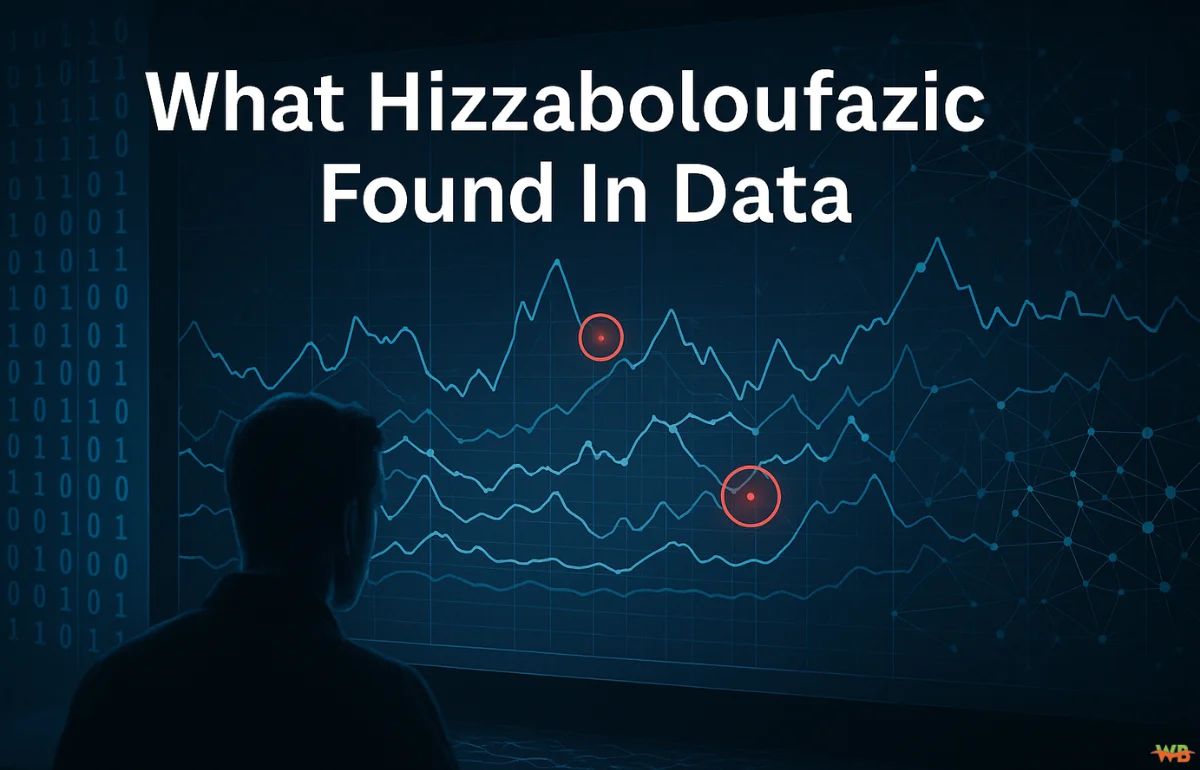In today’s fast-moving digital world, data analysis is no longer about surface-level patterns or obvious trends. It’s about diving deep, uncovering what lies beneath, and asking the unusual questions. One such question gaining traction in analytical circles is: “What hizzaboloufazic found in data?” While “hizzaboloufazic” may not be a formally accepted scientific term, it’s gaining momentum as a concept that symbolizes deep exploratory data analysis focused on anomalies, unexpected correlations, and hidden insights.
This article explores the meaning behind hizzaboloufazic, what it typically reveals within datasets, and how data professionals are leveraging it to improve business decisions, detect fraud, enhance security, and more.
What Does “Hizzaboloufazic” Really Mean?
A Concept, Not a Literal Term
The word hizzaboloufazic might sound whimsical, but in the context of data science, it refers to the investigative process of digging through data to uncover irregularities, outliers, or unusual patterns that standard analysis methods might miss. Think of it as looking for the “Easter eggs” in your data—clues that something important, strange, or valuable is hiding beneath the norm.
Why It Matters
So, what hizzaboloufazic found in datasets can often redefine assumptions. Businesses and analysts have found unexpected customer behavior, previously undetected fraud, or misconfigured systems by applying this mindset. It’s a way to spot “unknown unknowns,” a term often used in risk management and cybersecurity.
Techniques Behind the Hizzaboloufazic Approach
Exploring data with a hizzaboloufazic lens isn’t about running a few SQL queries or filtering by top-performing products. It requires advanced methods of data mining, machine learning, statistical modeling, and, most importantly, a curious mind.
Common Techniques Used
| Technique | Description | Use Case |
|---|---|---|
| Clustering Algorithms (e.g., DBSCAN) | Groups data points into clusters; isolates outliers | Identify customer segments or fraud attempts |
| Anomaly Detection Models (e.g., Isolation Forest) | Flags abnormal data points based on distribution | Detect system errors or unusual logins |
| Association Rule Mining | Finds hidden relationships between variables | Discover buying patterns or feature interactions |
| Z-Score / Statistical Analysis | Highlights deviations from the mean | Identify revenue anomalies or transaction outliers |
| Visual Analytics | Uses dashboards or heatmaps to uncover hidden signals | Spot trends in sales or customer drop-offs visually |
Example: What Hizzaboloufazic Found in Retail Data
Let’s take a real-world-inspired scenario. A retailer noticed a sudden dip in sales in specific cities during weekends—a counterintuitive finding. Through hizzaboloufazic-style exploration, they discovered that recent app updates caused geolocation mismatches, hiding weekend deals for users in those regions. A fix led to a 17% revenue spike the following month.
Cited in: Data Science Central, 2023
Domains Where Hizzaboloufazic Analysis Is Powerful
Cybersecurity and Threat Detection
In the cybersecurity domain, what hizzaboloufazic found in firewall logs and network traffic often leads to early detection of attacks. An unusual pattern in access times or login IPs could signify a breach before damage occurs.
Financial Fraud Detection
Banks and fintech companies apply this form of analysis to transaction data. Anomalies in purchase behavior—like sudden international transactions or rapid withdrawals—can hint at compromised accounts.
Source: IEEE Journal on Financial Data Science, Vol. 4, Issue 2
Healthcare and Medical Records
Electronic health records often contain hidden patterns. One hospital used advanced pattern detection (a hizzaboloufazic approach) to spot that patients with a rare allergy were being prescribed contraindicated medication due to a data entry error. Fixing this improved patient safety significantly.
What Hizzaboloufazic Found in Business Operations
Sometimes, it’s not about fraud or bugs. It’s about efficiency. Companies applying hizzaboloufazic analysis have uncovered:
-
Redundant internal processes slowing down delivery
-
Employees clocking in at illogical hours due to scheduling software glitches
-
Products returned frequently in a specific region, linked to poor packaging quality
In every case, the anomalies weren’t visible through standard dashboards, but rather surfaced through deeper investigative techniques.
Challenges in Conducting Hizzaboloufazic Analysis
High False Positive Rate
When you search for unusual patterns, not everything you find will be meaningful. Analysts often flag false positives that appear odd but are entirely explainable, like a drop in sales due to a public holiday.
Need for Domain Knowledge
No matter how sophisticated the tools are, understanding the business context is essential. A seemingly strange spike in online traffic might be from a successful campaign—only domain knowledge can clarify this.
Data Quality Issues
Dirty or incomplete data can easily mislead this kind of analysis. Ensuring clean, consistent, and well-documented data is a prerequisite for success.
Turning Insights Into Action
Once anomalies or hidden insights are detected, the next step is to investigate, validate, and act. This loop ensures that discoveries lead to impact.
Investigation
Look into the data further, check timestamps, look at user behaviors, and gather qualitative input when possible.
Validation
Check if the anomaly is a true signal or just noise—this could involve statistical checks or cross-referencing with external data.
Action and Prevention
Implement corrective measures—such as fixing data pipelines, re-training models, or updating policies—and build systems to avoid similar issues in the future.
What Hizzaboloufazic Found In Future Use Cases
With AI and machine learning growing rapidly, hizzaboloufazic-style thinking will become even more critical. Whether it’s through autoML tools, real-time anomaly detection systems, or AI observability platforms, the ability to dig deep and question the unexpected will remain a core skill for data professionals.
Conclusion: Why You Should Adopt the Hizzaboloufazic Mindset
If you’re working with data, don’t settle for surface-level reporting. Ask more from your data. What hizzaboloufazic found in your datasets could lead to breakthroughs— from saving costs to uncovering fraud, or even spotting the next market trend.
The next step? Build your anomaly detection toolbox, combine it with domain knowledge, and start listening to what your data isn’t saying out loud.
Sources:
-
IEEE Transactions on Knowledge and Data Engineering, 2023
-
Harvard Data Science Review, Vol. 5
-
Data Science Central, 2023 Blog Series
Ready to dig into your data with a fresh mindset? Start with what seems odd, and let your hizzaboloufazic journey begin.

Ton Roobprom is an experienced writer focused on practical advice across technology, business, travel, beauty, lifestyle, and home improvements. He specializes in distilling complex subjects into clear, actionable insights to help you enhance your daily life.


